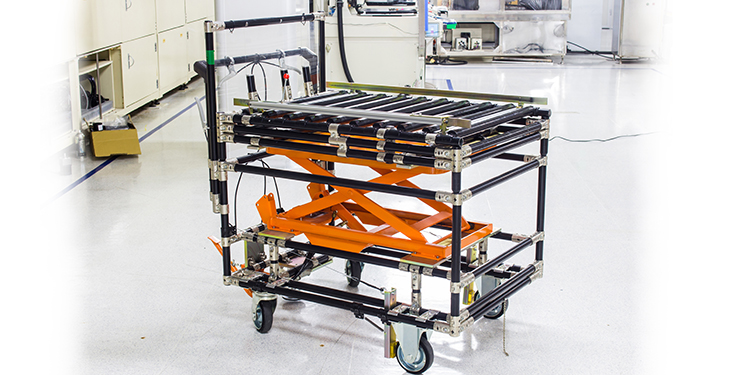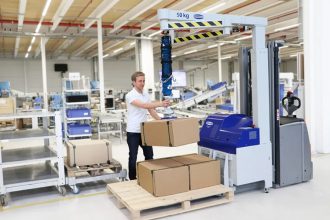Beyond Wheels And Casters: Total Cart Design Mitigates Push/Pull Forces

When engineering an industrial cart that will be handled manually for at least some (or all) of its operational usage, most users believe that the type of wheels and casters chosen is the most critical element of the design. And, while the construction and design of the wheels and casters utilized is significant to how easily an operator will be able to overcome the push/pull forces associated with maneuvering the cart, that’s not the only important ergonomic factor. There are several other aspects of a cart’s overall configuration that also contribute to the ease with which the unit can be pushed and pulled. Here’s an overview of the other key areas that must be considered to yield the most ergonomic cart design.
Construction: The overall weight of the cart impacts the amount of push/pull force that will be required to start its movement. Depending on the materials used when constructing the cart, and its structural design, the total weight of the unit can vary widely. Some carts are all plastic; others all metal. Alternately, a hybrid combination of plastic and metal might be the optimal solution to withstand the application while minimizing overall cart weight. Additionally, the height and placement of the handles — as well as of the wheels and casters — will affect the ease with which the cart can be moved.
Environment: Where the cart will be used and the path over which it will travel also affects design choices. Among the considerations are the existence of inclines and declines (as well as their angle), floor surface (degree of smoothness or roughness), indoors or outside usage (on concrete versus asphalt or gravel), and corners (tight or broad turning radius). The optimal wheel and caster construction and placement to mitigate push/pull forces will all be determined based on these factors.
Process: Carts that are to be towed as part of a train — either in single-file or as part of a mother/daughter configuration — require different design decisions than those that are operated only manually. That’s because carts that interface with trains and humans must be designed to accommodate both types of movement. Proper design ensures the loaded cart tracks smoothly when moving as part of a train yet can also be detached easily by the operator when it arrives at a work cell. The placement of the wheels (and the number of wheels utilized in the design) will be impacted by the application process in which the cart is used.
Accessories: Turntables can be added to carts to help minimize the amount of stretching and reaching an operator must do to access the load. However, a turntable can add considerable weight to the overall cart design, further increasing the push/pull forces required to move the load. Further, the design of the turntable and its axle can impact the push/pull forces experienced by the operator as he or she rotates the load. Both factors must be taken into consideration during the cart’s design.
Ultimately, when determining the optimal cart design to minimize the ergonomic push/pull forces experienced by the operator maneuvering it, work with your equipment supplier to review these key considerations. For assistance, the members of the Ergonomic Assist Systems & Equipment (EASE) Industry Group of MHI are available to answer questions about ways to best optimize your operations’ ergonomics.



